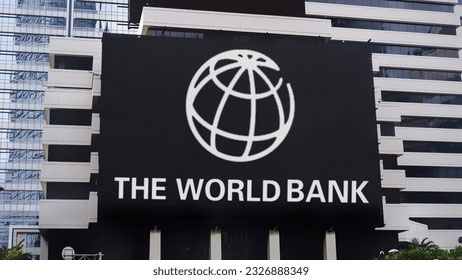Our Terms & Conditions | Our Privacy Policy
Why the World Bank Should Lift Its Outdated Ban on Nuclear Energy
Armed Conflicts, Featured, Global, Headlines, IPS UN: Inside the Glasshouse, Nuclear Disarmament, Nuclear Energy – Nuclear Weapons, TerraViva United Nations
Opinion
Todd Moss is founder and executive director of the Energy for Growth Hub.

WASHINGTON DC, Jun 5 2025 (IPS) – On June 10, the World Bank’s board will meet to consider lifting an outdated ban on nuclear energy – one that has remained in place for decades despite the growing global need for clean, reliable electricity.
The ban limits options for developing nations, undermines climate goals, and leaves countries vulnerable to authoritarian influence. Here are some key facts to know about the ban and its impact:
FACT: Over 3 billion people lack reliable electricity.
Nuclear power can help close this gap by delivering large-scale, dependable energy to regions where renewables alone are insufficient to meet rising demand.
FACT: Global electricity demand will double by 2050, led by emerging and developing countries.
Most of the world’s growth in energy demand will be among World Bank client countries in Asia, Middle East, and Africa that are open to nuclear power but still require financing.
FACT: Nuclear energy is one of the cleanest, most reliable sources of electricity.
Unlike fossil fuels, nuclear power generates electricity without carbon emissions – and unlike solar and wind, it provides round-the-clock baseload power essential for economic growth and industrialization.
FACT: The World Bank’s ban leaves developing nations dependent on Russia and China.
Without financing options from trusted institutions like the World Bank, countries turn to state-backed Russian and Chinese nuclear deals – often opaque, long-term arrangements that undermine sovereignty and energy security.
FACT: Developing countries want nuclear power – but can’t finance it.
Countries across Africa, Asia, the Middle East, and Latin America are actively exploring nuclear power but face steep financing barriers. Without World Bank support, they’re denied a viable path to energy independence.
FACT: Every credible path to a low-carbon future includes nuclear.
More than two dozen countries have pledged to triple nuclear power by 2030 to meet climate goals. Continued exclusion of nuclear from World Bank policy contradicts the urgency of the climate crisis.
FACT: The World Bank’s ban is copied by over 20 other development finance institutions.
This domino effect means that outdated policy by a few powerful shareholders is depriving low- and middle-income countries around the world of access to a key clean energy technology.
FACT: Modern nuclear technology is safer, smaller, and more flexible than ever.
Advanced reactors and small modular designs address past safety concerns and are well-suited for the needs of emerging markets, including off-grid, industrial, and remote applications.
FACT: Lifting the ban would open the door to U.S. and allied technology.
American nuclear firms are at risk of being shut out of deals due to the financing gap, while authoritarian states step in. Reversing the ban would promote fair, open competition and high safety standards.
FACT: A simple first step: build World Bank expertise.
The Bank doesn’t yet have a team of nuclear energy experts to assist and advise client countries. Creating a technical team to assess nuclear options would help countries make informed decisions – and allow the Bank to modernize itself and better serve its shareholders.
IPS UN Bureau
[ad_1]
Images are for reference only.Images and contents gathered automatic from google or 3rd party sources.All rights on the images and contents are with their legal original owners.
[ad_2]


Comments are closed.